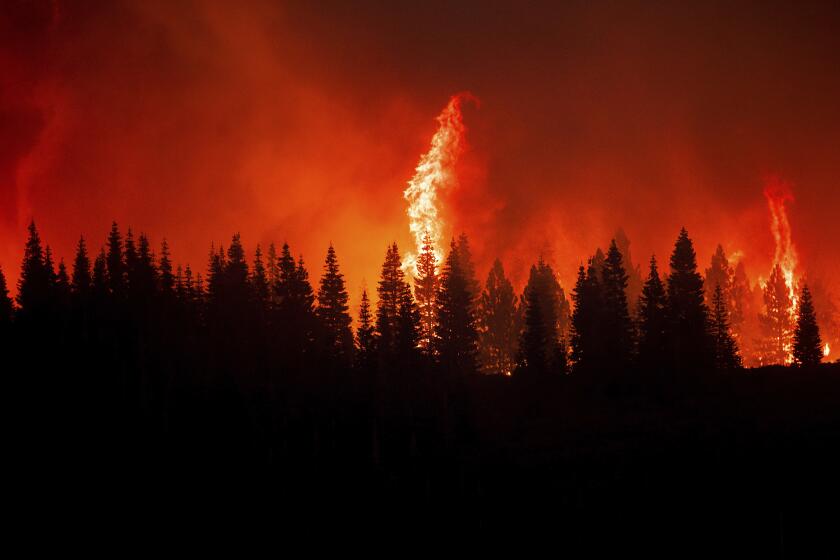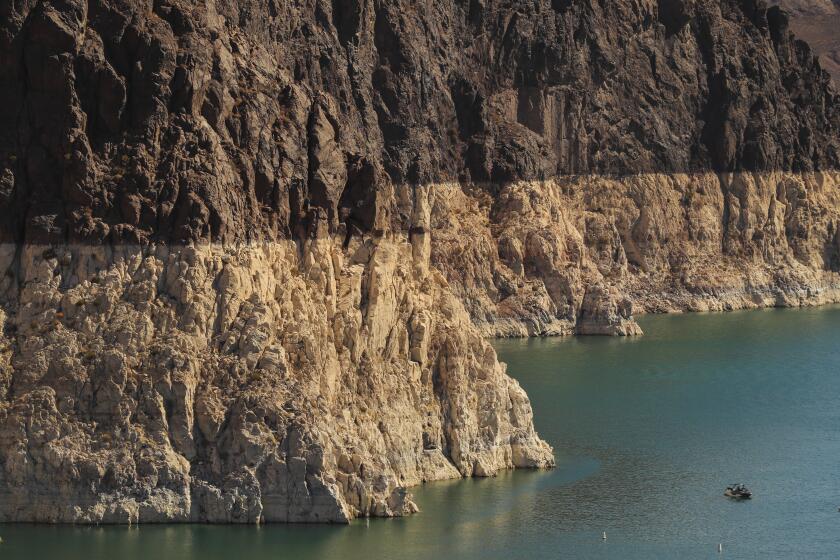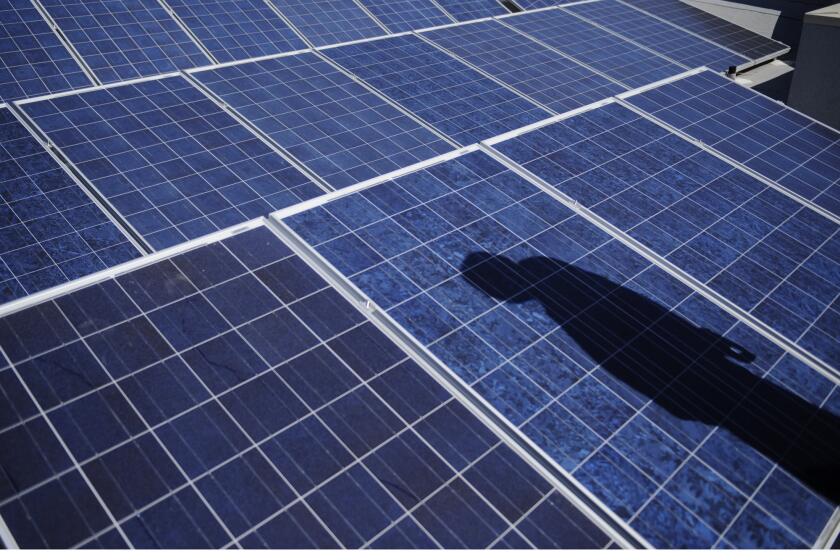How an Oregon wildfire almost derailed California’s power grid
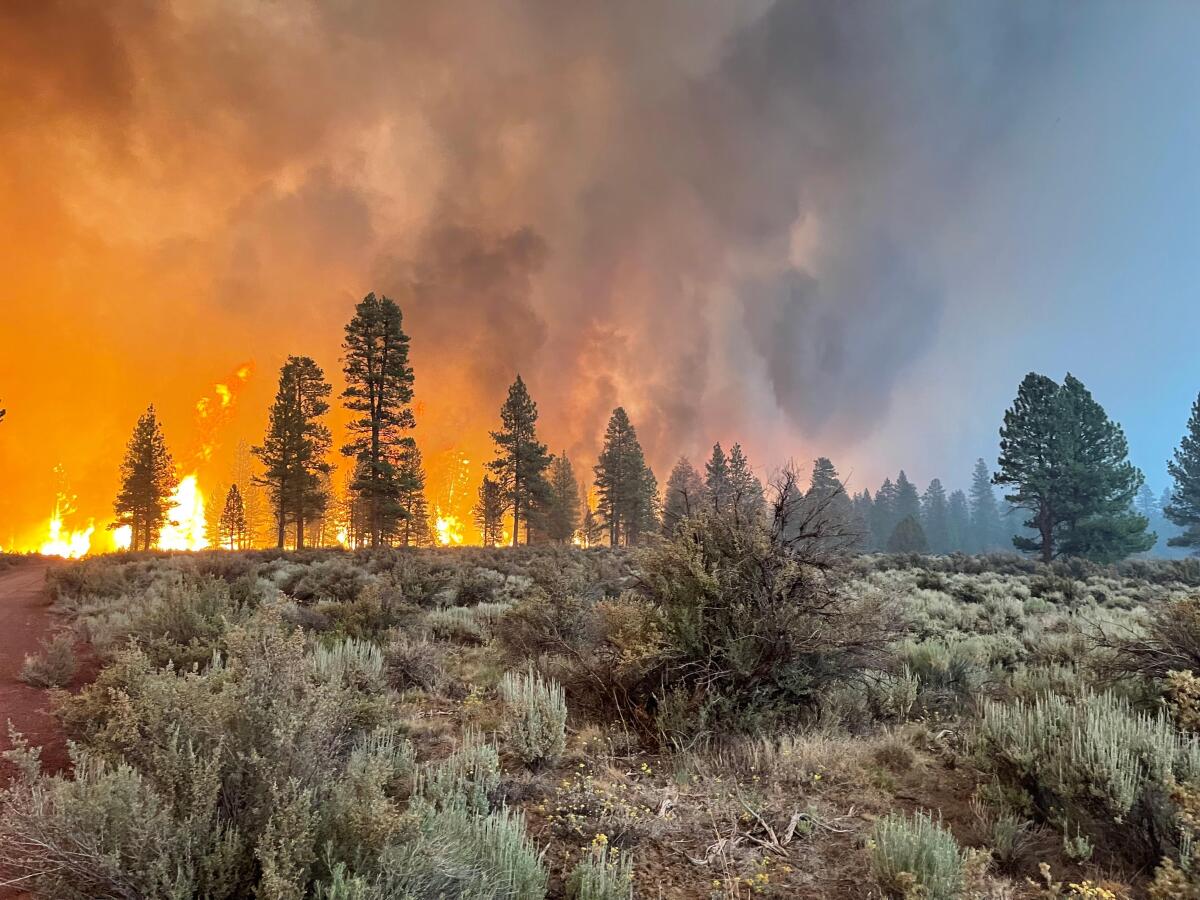
The first sign of trouble came at 4:22 p.m. Thursday.
Warning of “extreme temperatures across much of California,” officials urged the state’s tens of millions of residents to use less electricity the next evening, to make sure power demand didn’t outstrip supply and cause the lights to go out.
It was the third Flex Alert of a young summer that’s felt more like August or September as heat waves shatter records and wildfires devour the landscape, symptoms of a climate in chaos. And unlike the first two calls for energy conservation, this one would nearly bring the Golden State’s electric grid to its knees — all because of a wildfire in southern Oregon.
The next 28 hours offered a harrowing preview of life in the 21st century American West as greenhouse gases keep piling up in the atmosphere and as power companies switch from fossil fuels to renewable energy — a transition that’s badly needed to stem the climate crisis, but which brings its own challenges.
Here’s what happened.
State officials expected energy supplies to be tight Friday. The National Weather Service was forecasting temperatures of 110 degrees in Palmdale, 113 in Redding and 126 in Death Valley (it ultimately hit 130). People would be cranking their air conditioners late into the evening, right as the sun went down and the solar farms stopped generating. It was exactly the kind of situation that led to brief rolling blackouts for a few hundred thousand homes and businesses in August.
Already this year, there have been more than twice as many acres burned than during the same period last year — and hundreds more fires.
In a cruel twist of the climate era, California would have to rely on gas-fired power plants to get through the heat wave. But gas plants in Long Beach, Oxnard and Redondo Beach — which were supposed to shut down last year because of their negative environmental effects but were allowed to stay open precisely for this situation — were dealing with “plant trouble.” Nearly two-thirds of the power capacity at those coastal facilities was unavailable Thursday afternoon.
Meanwhile, the Bootleg fire was spreading fast, burning through Oregon’s Fremont-Winema National Forest near transmission lines that bring electricity from the Pacific Northwest to California. On Thursday evening, California dispatched several teams of firefighters to help battle the blaze.
“At that point, we didn’t know how many lines we were at risk of losing,” said Mark Rothleder, chief operating officer at the California Independent System Operator, or CAISO.
Rothleder never had an easy job, and it’s only getting harder as solar panels and wind turbines replace coal and natural gas. CAISO is responsible for keeping electricity supply and demand in balance for most of the state, every second of every day.
Eventually, that balance may be easier to strike. But the next few summers, at least, will be a constant battle. The clean energy technologies capable of filling in the gaps when the sun isn’t shining and the wind isn’t blowing are still relatively nascent, and critics say California’s energy regulators have been far too slow to put the pieces into place.
On Friday morning, power grid conditions started to change quickly as homes and businesses used a bit more energy than CAISO expected. Agency officials knew they might have to call on “demand response” programs that pay people to use less power.
Record heat. Raging fires. What are the solutions?
Get Boiling Point, our newsletter about climate change, the environment and building a more sustainable California.
You may occasionally receive promotional content from the Los Angeles Times.
Still, they felt the situation was under control — except for the Bootleg fire.
“We actually decided the risk was great enough, we should probably get in place an emergency proclamation,” Rothleder said in a phone interview with The Times.
Gov. Gavin Newsom’s office delivered that proclamation around 4:30 p.m., allowing fossil-fueled power plants to produce more air pollution than would normally be allowed and suspending limits on portable generators, among other steps.
CAISO officials were glad they didn’t wait. A few minutes after they asked for Newsom’s help, a power line that’s part of the California-Oregon Intertie was knocked out by the fire. The heavy smoke acted as a conductor, interfering with the electric current.
“Within a few minutes, the second line went. And then a few minutes later, the third line went,” Rothleder said.
California suddenly found itself short about 4,000 megawatts of imported energy — nearly 10% of Friday’s peak demand. And the situation was actually worse than that. Grid officials also had to limit the amount of power running north to south across the state line on another giant electricity cord known as the Pacific DC Intertie, to account for the possibility of that line suddenly going down. All told, California was looking at a 5,500-megawatt hole.
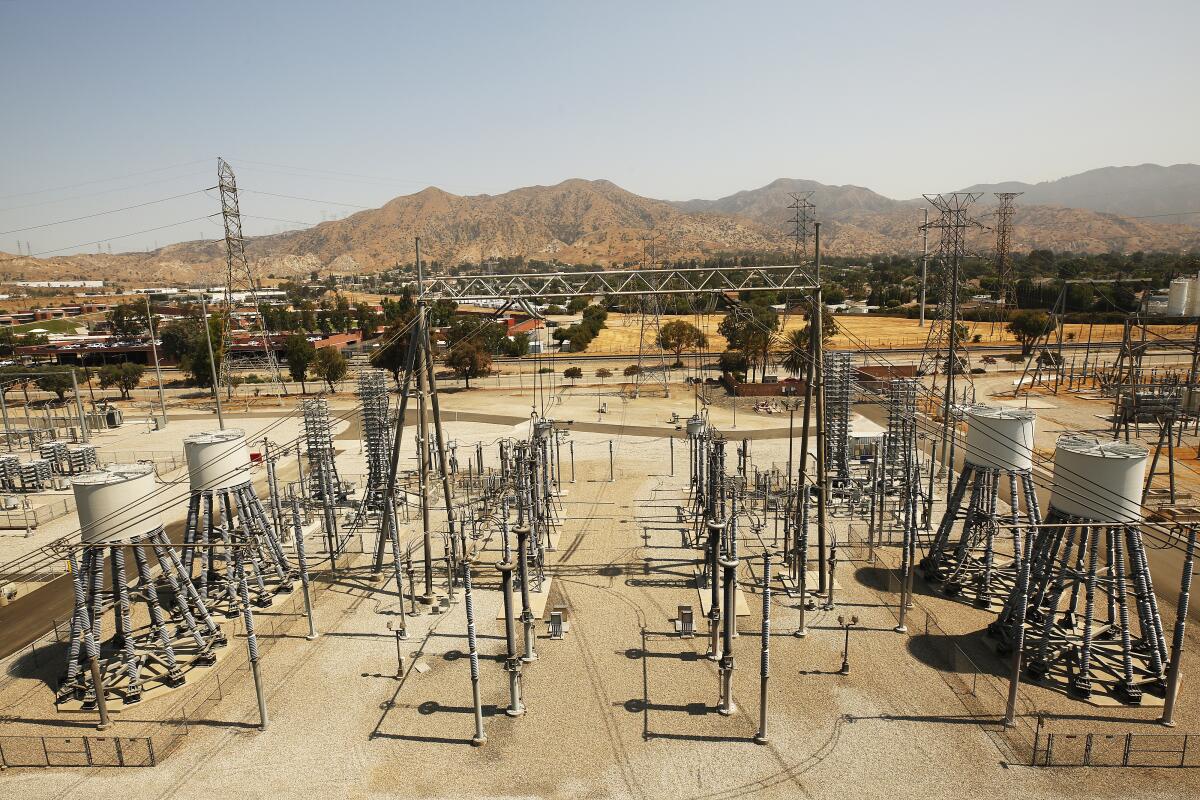
There was still plenty of solar power flooding the grid, so peak demand came and went around 5:35 p.m. without incident. It was a few hours later, as the sun slowly disappeared beyond the Pacific, that things would get dicey. Solar energy would ultimately fall from a high of 11,590 megawatts on Friday morning to a low of eight megawatts at 8:20 p.m., before going away entirely.
To replace that solar, CAISO and its market participants pulled out all the stops.
The gas fleet went to work, generating more and more power — and planet-warming emissions — throughout the afternoon, before starting to plateau around 5 p.m. At times, natural gas accounted for nearly two-thirds of the state’s electricity.
Hydropower dams were generating five times as much power by 7 p.m. as they were Friday morning, although they could have done more if not for a drought made worse by climate change. Electricity started flowing in from other states, and from the Los Angeles Department of Water and Power, which operates its own independent grid. The Flex Alert helped a bit, Rothleder said, although Californians didn’t cut back nearly as much as they did during a Labor Day weekend heat wave last summer.
Lake Mead is at the lowest water levels in its 85-year history. Federal officials who manage the lake expect to soon declare a water shortage.
Lithium-ion batteries, long heralded as a power grid savior capable of storing solar power for the evening, proved their worth. They started discharging electricity around 5 p.m., contributing 500 to 1,000 megawatts for several hours.
It wasn’t enough. At 6:48 p.m., CAISO declared a Stage 2 emergency, ordering the state’s largest private utility companies — Pacific Gas & Electric, San Diego Gas & Electric and Southern California Edison — to prepare for rolling blackouts.
The grid operator had nothing left in reserve, no energy resources to spare. If flames or heat or malfunction were to knock out any major generators or electric lines, the utilities would have to intentionally cut power to some of their customers.
“We were literally riding on the edge of that for an hour and a half to two hours,” Rothleder said.
Around 7:50 p.m., the power grid hit its “net peak” — the moment when electricity demand, minus solar and wind power, is highest. It’s the scariest time of day for grid operators across the West.
Things were tense at CAISO headquarters in Folsom. But nothing else went wrong. Gas plants kept generating, the wind kept picking up, and California’s single-largest energy source, the Diablo Canyon nuclear plant, kept humming. The lights stayed on.
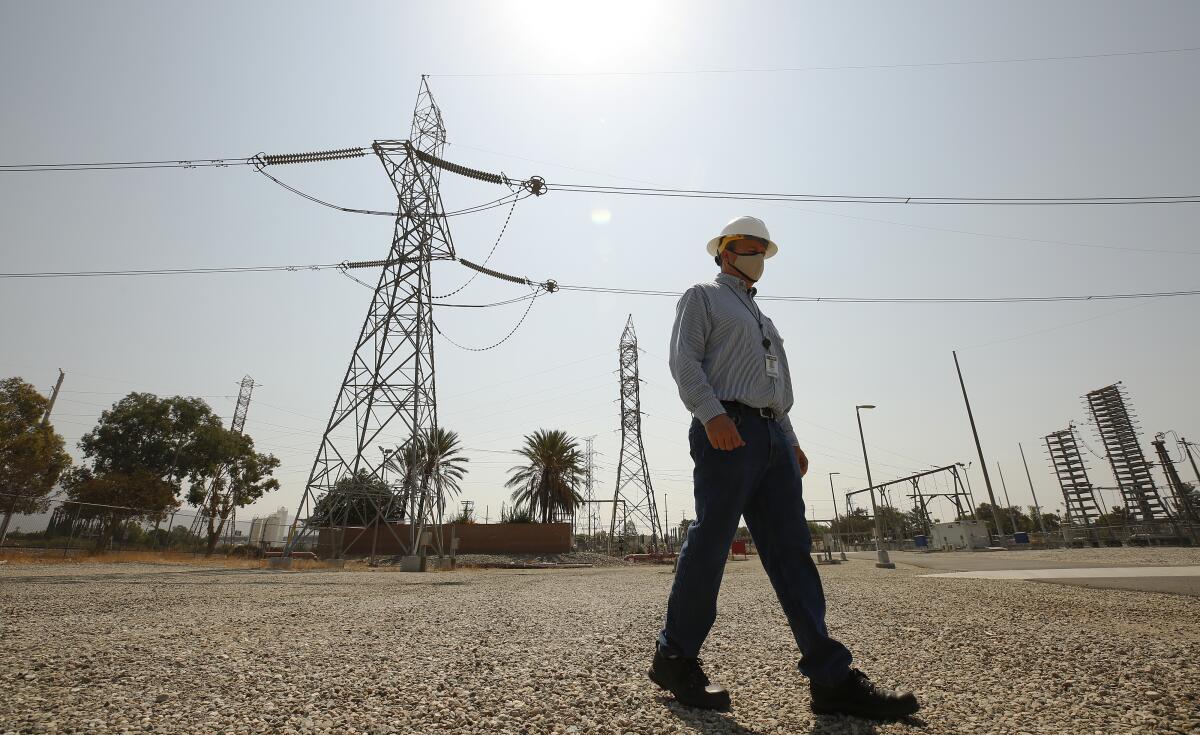
At 9 p.m., the Flex Alert ended and emergency conditions were lifted.
Californians weren’t out of the woods yet — the Bootleg fire was still getting bigger, and the Oregon transmission lines were still out of commission. On a hastily arranged media call Saturday, Elliot Mainzer, CAISO’s chief executive, warned that the state was “heading into what’s going to be a very stressed evening.” He urged homes and businesses to save energy.
“Honestly, I think we’re going to need more response than we got last night,” he said.
It turned out Saturday was easier than Friday. Some gas generators dealt with their “plant trouble” and came back online. Strong breezes allowed wind turbines to produce more electricity than expected. And the steps outlined in Newsom’s proclamation kicked in more fully. CAISO did not declare an emergency Saturday.
But the dangers for the next few months are daunting. The worst wildfires and hottest heat waves typically strike in August or September. As reservoir levels fall, there will be less hydropower available during those months.
The worst-case scenario is a West-wide heat wave like the one that prompted rolling blackouts last summer, combined with blazes that knock out multiple electric lines. It’s a one-two punch that’s becoming more likely as temperatures rise.
“It’s going to be a really, really intense few years,” Mainzer said in an interview.
Supplying enough power on hot summer evenings is one of California’s main challenges. But experts say there solutions.
There are no silver bullets, although possible solutions aren’t hard to find: Build more batteries and other types of storage, and invest in technologies such as geothermal that can generate clean power 24/7. Help families install small solar systems paired with batteries so they can stay powered when the grid is down. Make it easier for people to get paid to use less electricity when the grid is stressed. Spend more money maintaining transmission lines so they’re less vulnerable to fire.
Better coordination with other Western states could be key, especially if it helps California import more wind power from New Mexico or Wyoming, where strong breezes blow more consistently than they do here. Offshore wind turbines would help for the same reason. Officials could also rescue the Diablo Canyon nuclear plant, which is slated to shut down in 2025 after decades of anti-nuclear activism and earthquake concerns.
Support our journalism
Your support helps us deliver the news that matters most. Subscribe to the Los Angeles Times.
None of it will be cheap. But neither is the alternative of continuing to burn fossil fuels that are making this part of the planet hotter, drier and more flammable.
“The next year or two are going to be just an absolute full-throttle press to get those resources on the system,” Mainzer said
Even as the power grid chief talked through what had nearly gone wrong, and what the solutions might be, a message went out through his agency’s app: There would be another Flex Alert on Monday, the following day. The fifth of the year.
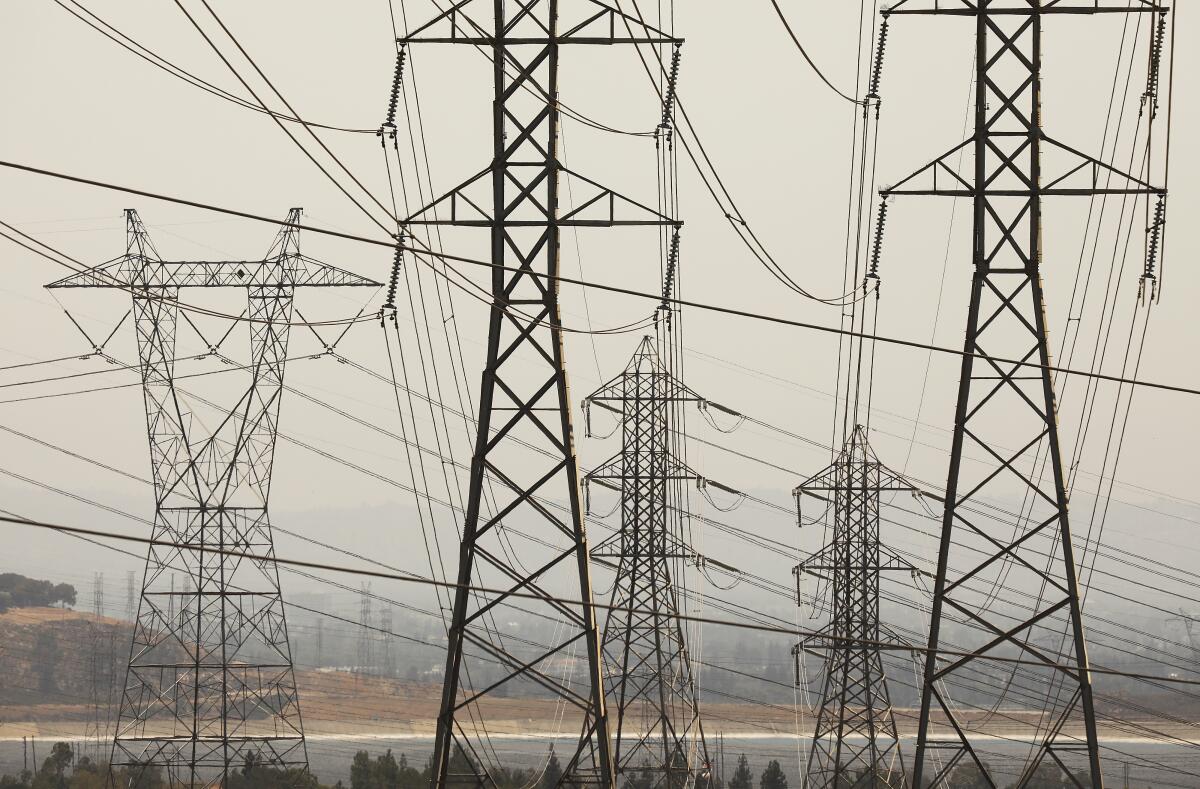
More to Read
Inside the business of entertainment
The Wide Shot brings you news, analysis and insights on everything from streaming wars to production — and what it all means for the future.
You may occasionally receive promotional content from the Los Angeles Times.
